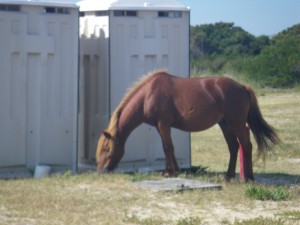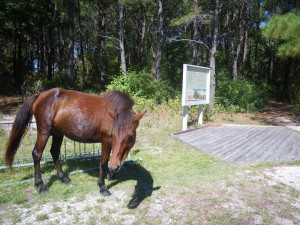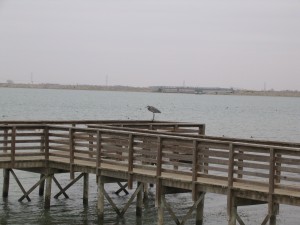August 9, 2012
 When you have dense breast tissue… at least, that is what some physicians say [go here, for more: http://www.womentowomen.com/breasthealth/densebreasttissue-mammograms.aspx ].
When you have dense breast tissue… at least, that is what some physicians say [go here, for more: http://www.womentowomen.com/breasthealth/densebreasttissue-mammograms.aspx ].
It has been 15 years since my annual mammogram led to a callback from the doctor for more x-rays and then a needle biopsy and finally ‘the all clear’ — no sign of cancer pronouncement. But it happened again last week. I got my annual mammogram on my way out of town to go to Atlanta for a visit with my daughter and granddaughter and son-in-law. And the day after I had the screening, I got a message on my home machine to call for a return visit…
Things have changed in the last 15 years, of course. Now, digital mammography makes some things more likely to be seen on the x-ray compared to film. Go here for a comparison: http://www.umm.edu/breastcenter/digital_mammography.htm?gclid=CNbCiKu_27ECFUlnOgodsH4A_A
At any rate, I returned to the imagery center for more x-rays. Here is how the communication went. First, it was nearly impossible to understand the message on my answering machine. My husband and I listened to it a half dozen times. We looked up the phone numbers of the imagery center, and none of them matched what we thought we were hearing. Nonetheless, I wrote what we thought they were saying and tried the number. It rang out to a message saying that it was long distance. Not likely then to be what I needed to call. Next, I tried calling the number using the first 3 numbers that all the numbers online for the imagery center used. And the last 4 numbers we thought the caller was saying that appeared nowhere in the online listing. Success. I got a nurse who checked and said, “When can you come in?” And I made an appointment for the day after I would return from my visit, which was a week after the first mammogram.
I went to the imagery center, this time with my husband coming in. The volunteer greeted me with, “Oh. I am so sorry.” Yikes. Not what you want to hear. She remembered me from the week before because we had a long chat about my height. At any rate, I would venture to say–“so sorry” is not quite the right expression in this situation. Perhaps “sorry you have to come in for more tests” if ‘sorry’ is to be used at all. The expression and her empathy were, however, unsettling.
Once I was in the room with the x-ray technician, I encountered the other end of the spectrum. The communication was reactive rather than proactive regarding what she wanted me to do. “Put your arm up and grab the handle? I did. “No. Turn this way. Face the machine.” Her tone was irritated. Wow. It is 9:30 in the morning. Why is she so grumpy? I am the one getting my boob smashed again.
She sighed. Letting out a clear expression of annoyance, she said. “Stick your bum out.” Who talks like that? “No. Look at me– Like this–” she said as though talking to someone she regarded to be extremely stupid. Finally, she was satisfied.
Time for another image. She turns me a bit and I try to enact what I have learned. I stick my bum out. “No.” she says harshly. “Stand up straight.” My arm began to quiver. Unavoidably uncertain about what I was doing wrong. Several more images and abrupt commands later, we were done.
“Will the radiologist come in here to discuss these with me?”
“No. Wait in the waiting room. I will get you when he is ready for you.”
I asked the volunteer if she would get my husband when I got called to the radiologist meeting. She told me to ask the technician to do it. So, when the technician came to get me, I asked her. And she did. No attitude. Wow!
And then there was the radiologist. I don’t think he could have been nicer or clearer. He put two pictures up on a screen and pointed to a small round dark spot about the size of a pellet for a BB gun. “This is what we’re looking at that’s different,” he said. “All this is your muscle and dense breast tissue.” It all looked like a lot of snow to me but I could see the BB…
“We’re going to do an ultrasound to see what we can learn about that spot.”
“What will the ultrasound tell you?”
He launched into a helpful answer that I will summarize as, ‘if the sound waves go through the mass, it’s a cyst. If they don’t it may be something we need to take a look at.’
The sound waves showed no mass. He spent plenty of time making sure that it did not appear in any direction. And then he announced, “I believe it’s a cyst. I will call this ‘normal’ and you won’t need to return for a year. Unless, of course, you see or notice changes that should be checked. Any questions.”
Hip Hip Hooray…. But I wish someone would give me a satisfaction survey to fill out about the volunteer and x-ray technician. I have a few thoughts about how their communication could be improved.
 Today is Dad’s 80th birthday. We live too far apart to be together on many of these big life event days, and this is one of those days where a chat on the telephone just doesn’t quite do it. I am thinking about Dad and there are really so many thoughts but most of all, I just feel blessed to have a dad who shares his spirituality and his passion for nature, which really go hand- in- hand. He shares with me how the Lord has provided for him in immeasurable and unseen ways, and in concrete ways–as when a bike part broke on a ride out in the desert, only to turn the next bend walking his bike and finding in the path, something that would work to patch a repair, making it possible to ride again.
Today is Dad’s 80th birthday. We live too far apart to be together on many of these big life event days, and this is one of those days where a chat on the telephone just doesn’t quite do it. I am thinking about Dad and there are really so many thoughts but most of all, I just feel blessed to have a dad who shares his spirituality and his passion for nature, which really go hand- in- hand. He shares with me how the Lord has provided for him in immeasurable and unseen ways, and in concrete ways–as when a bike part broke on a ride out in the desert, only to turn the next bend walking his bike and finding in the path, something that would work to patch a repair, making it possible to ride again.

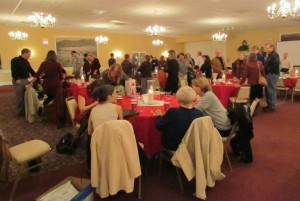
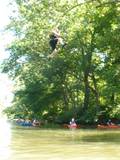

![2009_Sojourn_065[1]](http://whyhealthcommunication.com/whc_blog/wp-content/uploads/2011/04/2009_Sojourn_0651-300x224.jpg)


